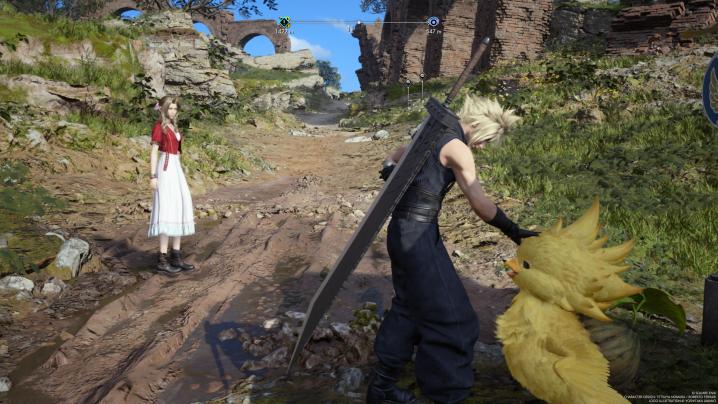Don’t let Final Fantasy VII Rebirth’s open-world burn you out

I’m normally a completionist when it comes to games, but I wish I had told myself to push that mindset to the side before I started Final Fantasy VII Rebirth.
I get the desire to do it all, I really do. In the critically acclaimed sequel, we’re finally let loose outside of Midgar. Square Enix has laid a huge, lush set of biomes to stretch our legs in after being stuck in the cramped hallways and tunnels of the drab city. Despite most of the world activities in Rebirth being standard open-world fare (activating towers, scanning points of interest, and hunting down specific monsters), there’s an undeniable novelty to doing it with Cloud and the rest of Avalanche. What I wish I had known before starting was just how easy it was to burn out on that feeling.
Consider this a PSA: Unless you’re a glutton for content, I don’t recommend trying to 100% complete Rebirth as you experience the story. Don’t be afraid to stick to the critical path when you feel the open-world exhaustion set in. It could save your playthrough.
Dilly-Dally, Shilly-Shally
When you enter one of the six open-world areas in Rebirth, you’ll quickly discover the exploration loop. There’s a lot that’s worth doing, from excellent side-quests to a host of great minigames at the Gold Saucer. Not everything is worth obsessing over, though. Every time you enter a new area, Chadley will give you a list of world activities to complete, which can be uncovered by activating towers. They’re largely inoffensive tasks that don’t take a lot of brainpower to do outside of some tricky combat encounters.

The problem with all these activities isn’t that they’re bad; it’s that you have no way of knowing just how many you have ahead of you. Every hub repeats the same objectives over and over with little variation. Stopping to obsessively do them all every time you reach a new hub can wreck the narrative pacing, putting hours of digression between story beats. You can spend four hours galivanting around Junon before actually getting to its first town and progressing any story.
I’m not recommending that you simply mainline the story and side-quests. Rebirth is full of well-constructed diversions. Minigames like Queen’s Blood are worthy investments of your time. There are simple ones such as the Punch-Out!-like fighting game where you dodge and counter enemies in a few different difficulty levels. Others, like Chocobo Racing, could fill a dozen hours. Between the gear, tracks, and ranks to rise through, it is not only more dynamic and satisfying but also offers more meaningful rewards.
The menial world tasks aren’t always as rewarding, even if they feel easy enough to check off a list. They can even throw off the difficulty curve in Rebirth by leading your party into some accidental over-leveling. If you want to just crush all enemies and bosses without having to engage with the action-RPG’s deep combat, more power to you. There is a lot of satisfaction, though, that comes from strategizing your team composition, Materia loadouts, and equipment for the boss battles. If you’re so strong that you can just hammer away at a boss and come out on top, you’ll be missing out on a lot of the more intricate and tactical mechanics that elevate Rebirth above a standard action game. Using your critical thinking, planning, and proper execution is when Rebirth shines brightest.
If you’re concerned about Final Fantasy VII Rebirth ending too soon, I sympathize with you. We’ve been waiting a long time for this second chapter and will likely be waiting just as long for the conclusion. That said, there’s an entire five-course meal worth of game here for you, so don’t feel like you need to fill up on the endless breadsticks.
Final Fantasy VII Rebirth is out now on PS5.
Editors’ Recommendations
Gaming,Final Fantasy 7 Rebirth,open world game,side quest,Square Enix,Gaming,Leisure,Video games,Video gaming
#Dont #Final #Fantasy #VII #Rebirths #openworld #burn
